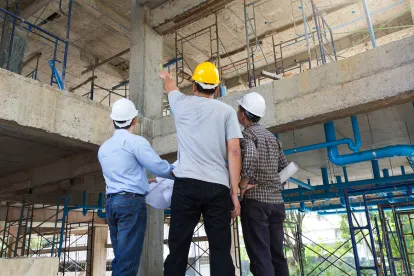Building a mixed-use project? If so, Colorado law might render void some of the contractual protections that you bargained for.
In Broomfield Senior Living Owner, LLC v. R.G. Brinkmann Co., 2017 COA 31, reh’g denied (Apr. 20, 2017), a division of the Colorado Court of Appeals had to decide whether certain construction defects claims brought by a project owner were untimely. The project was a senior assisted and independent living facility (senior facility). The construction contract (an AIA form) contained three separate accrual provisions with respect to claims: Claims arising from acts or failures to act (1) occurring before substantial completion accrue no later than the date of substantial completion; (2) occurring between substantial completion and final payment certificate accrue no later than the final payment certificate issuance date; and (3) occurring after final payment accrue no later than the time provided in the warranty provisions. Applying the contract language, the trial court entered summary judgment in the contractor’s favor and ruled that the construction defects claims at issue accrued on the date of substantial completion and were therefor barred.
The project’s owner argued on appeal that its senior facility was a “residential property.” This matters because of the Homeowner Protection Act of 2007 (“HPA”). Specifically, with respect to residential property owners, HPA voids any waiver or limitation of rights, remedies, or damages provided by the Construction Defect Action Reform Act (“CDARA”):
In order to preserve Colorado residential property owners’ legal rights and remedies, in any civil action or arbitration proceeding described in section 13-20-802.5 (1), any express waiver of, or limitation on, the legal rights, remedies, or damages provided by the “Construction Defect Action Reform Act”, this part 8, or provided by the “Colorado Consumer Protection Act”, article 1 of title 6, C.R.S., as described in this section, or on the ability to enforce such legal rights, remedies, or damages within the time provided by applicable statutes of limitation or repose are void as against public policy.
C.R.S. § 13-20-806(7)(a). This statute specifically applies only to protect “claimants asserting claims arising out of residential property . . . .” C.R.S. § 13-20-806(7)(c).
As a result, the HSA prevents homebuilders from shortening the statute of limitations for bringing construction defects claims. Under the applicable statute of limitations, the construction defects claims would accrue based on when the physical manifestation of the defect was discovered. See C.R.S. § 13-80-104(1)(b)(I). But under the construction contract in Brinkmann, the construction defects claims would accrued upon substantial completion of the project, which was much earlier. If the HPA applied in Brinkmann, it would render void the contractual provisions that essentially shortened the statute of limitations.
But does a senior facility where the entire building is owed by the operator of the facility count as a “residential property owner” for purposes of the HPA? The contractor argued that the owner of the senior facility was “not the type of ‘residential property owner’ the HPA was intended to protect because it is a commercial entity.” But the Court of Appeals agreed with the owner. Because the HPA does not defined “residential property” the Court turned to dictionary definitions and the statutory definition of commercial property and held that the senior facility was a “residential property.” Therefore, the HPA applied and voided the contractual language that governed when claims accrued.
So what’s the impact? Based on the holding in Brinkmann, an owner of an apartment complex will likely fall under the definition of a “residential property owner.” So any contractual waiver or limitation of rights, remedies, or damages provided by CDARA contained in a contract for the construction of an apartment complex will likely be void. The same may be true for mixed use projects, although that would pose a more difficult issue. Part of the Court’s reasoning in Brinkmann was based on the zoning of the project. A mixed-use project has mixed zoning. Also, some of the property may be used for commercial and retail uses, while other units may be residential.
Finally, some read section 13-20-806(7)(a) very broadly and argue that it renders void any contractual limitations of damages and even waivers of consequential damages. HPA obviously voids any attempt to shorten by contract the deadlines for brining residential construction defects claims. But to the extent HPA can be read broader, section 13-20-806(7)(a) may render void all sorts of contractual limitations on any project that includes residential units.



 />i
/>i

